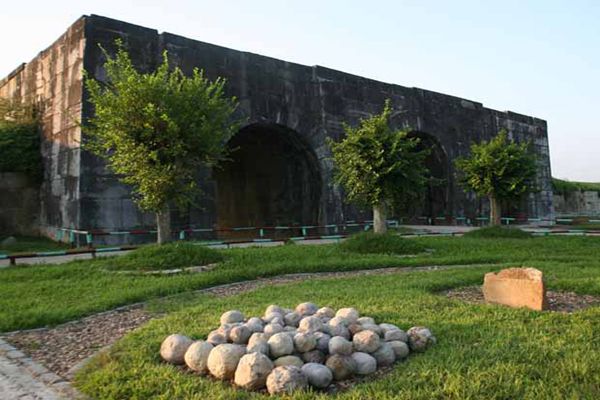

Hue Court Music recognized by UNESCO as a masterpiece of the Oral andIntangible Cultural Heritage of Humanity is the last vestige of Vietnamese Court Music. “Nha nhac”, a court musical genre with elegant lyrics and intricate dances, symbolizes the eternity of the regal power and prosperity of the dynasty, so the monarchical dynasties in Vietnam attached importance to it.
According to history books, Vietnamese court music has existed since the Ly Dynasty (1010-1225) but it flourished in the Nguyen Dynasty (1802-1945). Hue Court Music in the Nguyen Dynasty was called Hue court music because this dynasty set up the capital in Hue where it remained for nearly 150 years.
The special traits of Hue Court Music is the process of integrating, adopting and modifying Chinese, Champa cultures and Buddhist, Confucian impacts.
The theatre had restaged an old tuong play on General Tran Binh Trong (1259-85), and organised two training courses on royal music and dances.
The theatre’s research team had met with 20 old artists of royal music, classical drama and dance, who were living in Hue city and its vicinity. As many as 250 pages of written documents were completed on the artists’ profiles, plus music notes of their performance and 67 CDs and VCDs on their performing techniques.
They were among a few people who could remember old music pieces performed at the Nam Giao worship ceremony. The two brothers were among living artisans of the royal music band of Bao Dai reign (1926-45), who could play various traditional instruments like the dan nhi (two-stringed fiddle), tam am (three-tone percussion), phach tien (castanets) and mo (bells).
Cinet










(84-63) 3 826042 – (84-63) 3 511142
No 54 Nguyen Dinh Chieu, Ham Tien Central Mui Ne Beach Binh Thuan Vietnam
523 To Hien Thanh District 10 Ho Chi Minh City Vietnam
Ha Long Halong City Quang Ninh Vietnam
A13 Hung Thong 2 Halong City Quang Ninh Vietnam




